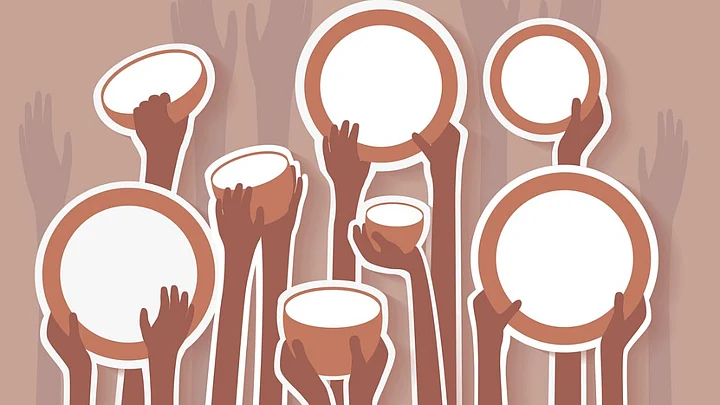Imagine a scenario – where a family living in a rural/ urban area, does everything by the book to nourish their toddler. The mother-in-law supports her daughter-in-law to breast-feed her child exclusively, the parents take the child to nearby Anganwadis for essential services like vaccinations, and check-ups etc., and also enrol the child in the Anganwadi for pre-school education. Nevertheless, the toddler is undernourished. How is this possible?
In India, the magnitude of malnutrition continues to be high, primarily among children under-five years who are wasted and severely wasted (severe cute malnutrition or SAM), the percentage has increased to 21 per cent and 7.5 per cent which was 19.8 and 6.4 per cent respectively earlier as per NFHS-3 data.
Lack of WASH Services Linked to Malnutrition
However, in the above scenario, despite proper diet, the child is still sickly. Did the family have access to safe water, sanitation and hygienic practices? The lack of WASH services is the leading cause of life-threatening diseases like diarrhoea which leads to 50 per cent of child malnourishment cases.
Treatment of SAM has undergone a paradigm shift over the years, and it has moved from the expensive constraints of hospital settings towards community-based management (CMAM) in over 60 countries. This approach involves timely and early detection of severe acute malnutrition in the community, which eventually leads to suitable treatment, with the provision of ready-to-use therapeutic foods or other nutrient-dense foods at home. If integrated efficiently with a facility approach, all severely acute malnutrition deaths can be prevented.
Wholesome nutrition is not just about the availability of food for consumption, but also the right type in the right amount.
Nutrients from correct breastfeeding habits and a varied diet of supplementary foods also need to be absorbed by the body. This increases the developmental process of the child’s both physically and mentally improves his/her chances of survival. The golden first 1000 days determine the child’s future immensely. What can prevent the body from the nutrients to be absorbed? – The answer is simple, WASH; it is the catalyst which shows immediate results.
WASH, a collective term for Water, Sanitation and Hygiene, these components are grouped because of their interdependent nature. A clean supply of water results in cleaner toilets for use, hands to wash before and after meals and reduce immediate faecal-oral transmission.
As per UNICEF guidelines for the management of SAM in children, 2015, frequent bouts of infection affect the child’s nutritional status. The child’s body is unable to absorb the nutrient contents even if a balanced diet is provided. It is a cruel cycle of persistent illness. A child with SAM is nine times more likely to die from common infections (e.g. malaria, pneumonia, diarrhoea). Approximately half of all diarrhoea episodes and a third of respiratory infections can be avoided by breastfeeding practices and proper WASH conditions to inhibit transmission of harmful pathogens which inhibit a child’s ability toabsorb nutrients. Strategic WASH plans at the state and national levels can reduce diarrheal episodes drastically.
Need for Integrated Approach
With the launching of independent programs like the POSHAN Abhiyaan and the Swachh Bharat, Swachh Abhiyaan, the GoI is already on its way towards an integrated approach. 80.9% of the world is off-track when it comes to achieving the SDG goal for wasting. Because India accounts for half of the global burden of wasting, India has to expedite its implementations plans for prevention and treatment of wasting by making it a national priority. Using WASH agenda in the prevention strategy for wasting at the community will yield visible sustainable impact in the health indicators for our children.
Education here also plays an important role, as per the draft National Education Policy, 2019, plans to introduce Early Childhood Education (ECCE) curriculum in Anganwadis and all pre-schools is a much-awaited process to observe. This move will deliver the basis of a strong foundation for quality education and training across Anganwadis, pre-schools, and primary schools. It is a process that will build skilled human resources which will prevent low birth weight deliveries by early screening programs, and yield healthy indicators for adolescents, maternal and child health in communities.
As per UN-Water Global Analysis and Assessment of Sanitation and Drinking-Water (GLAAS), 2019 report, it has been observed that when countries put in place dedicated policies, when they draw up efficient implementation plans which are financially viable, with robust institutional support, they can deliver successful WASH facilities. This eventually fills in the educational gaps, empower a skilled human resource at all levels and hence in bringing in the much-desired behaviour change in communities.
Given the complexity of factors that cause malnutrition, especially lack access to clean water and sanitation, poor hygiene, and comprehensive education, no single intervention alone will achieve sustainable results. Systems need to invest it wisely for creating a healthy environment for our children and families. This can be done effectively with a multisector approach, thereby sustainably empowering the primary caregivers (mothers), the education department at all levels, parents, practise of solid waste management, municipal authorities, corporate partners, civil societies and communities at large. With a strengthened system and skilled workforce, a family doing everything right for their children can and should not fall sick
(Ankita Choure is a project manager with CASP Pune)
(At The Quint, we question everything. Play an active role in shaping our journalism by becoming a member today.)
